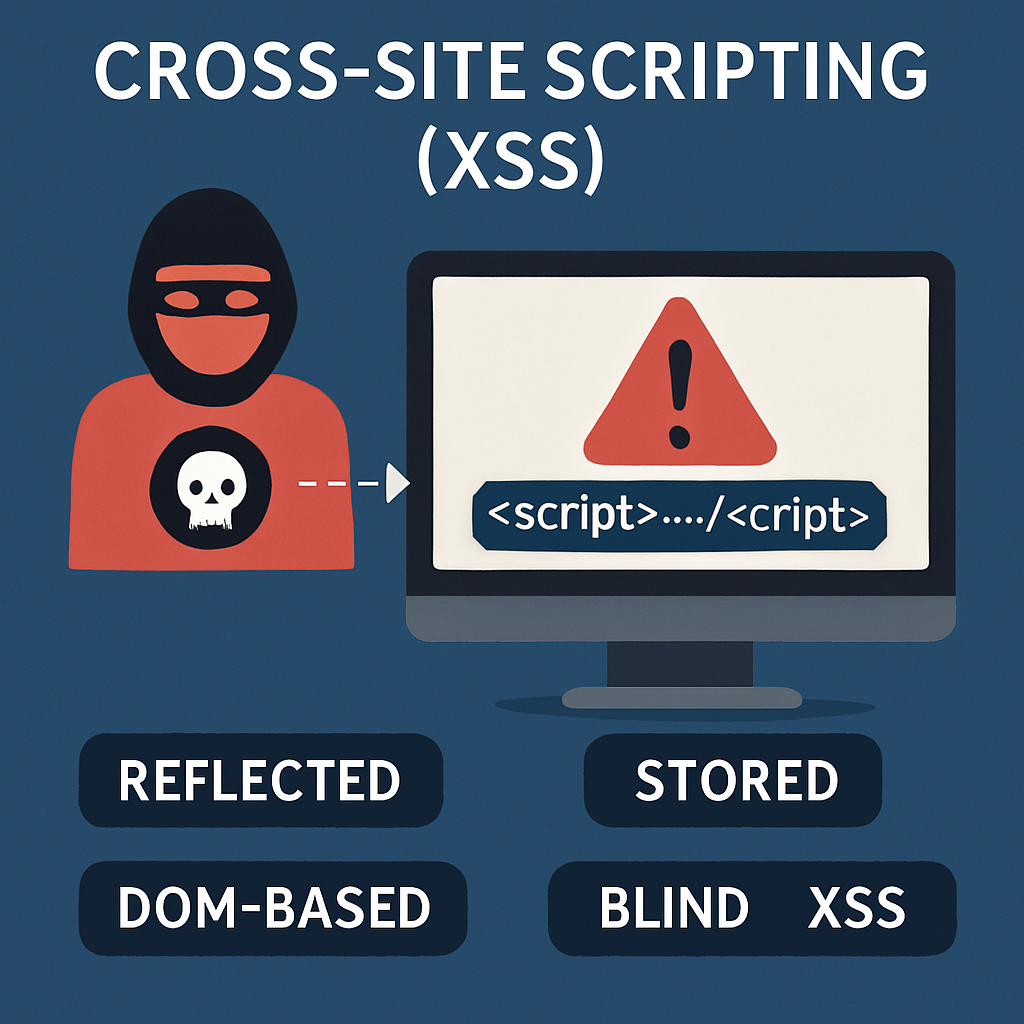
Cross-Site Scripting (XSS) Attacks: A Comprehensive Analysis of Mechanisms, Impacts, and Modern Defense Strategies
Создано 13 Май, 2025 • Tools for Web Developers • 1,954 просмотров • 3 минуты прочитано
Cross-Site Scripting (XSS) remains one of the most pervasive and dangerous vulnerabilities in web applications, enabling attackers to inject malicious scripts into trusted websites.
Cross-Site Scripting (XSS) Attacks: A Comprehensive Analysis of Mechanisms, Impacts, and Modern Defense StrategiesCross-Site Scripting (XSS) remains one of the most pervasive and dangerous vulnerabilities in web applications, enabling attackers to inject malicious scripts into trusted websites. This report provides an in-depth examination of XSS attacks, categorizing their variants, analyzing detection methodologies, and evaluating contemporary mitigation strategies. By synthesizing insights from academic research, industry tools, and security frameworks, we explore the evolution of XSS exploitation techniques and the corresponding advancements in defensive measures. Key findings highlight the critical role of hybrid machine learning models for detection, the effectiveness of strict Content Security Policies (CSPs), and the growing threat of Blind XSS in modern web ecosystems. The analysis underscores the necessity of adopting layered security practices to combat increasingly sophisticated attack vectors.
1. Fundamentals of Cross-Site Scripting (XSS)
1.1 Definition and Historical Context
Cross-Site Scripting (XSS) is a client-side code injection attack where malicious scripts execute within a victim’s browser, often bypassing same-origin policies to steal sensitive data or hijack user sessions. First identified in the late 1990s, XSS vulnerabilities have persisted despite advancements in web security, owing to the complexity of modern web applications and inconsistent input sanitization practices. The term "cross-site" originates from the ability of attackers to deliver payloads across different domains, though contemporary attacks frequently target single-page applications (SPAs) and dynamic DOM manipulations.
1.2 Attack Mechanics and Threat Landscape
XSS exploits occur when untrusted data-such as user inputs, URL parameters, or cookies-is rendered without proper encoding. Attackers craft payloads using JavaScript, HTML, or CSS to manipulate client-side execution contexts. For instance, a reflected XSS attack might embed a script in a URL parameter that executes when the victim clicks a manipulated link. Stored XSS payloads, conversely, persist in databases and activate for all users accessing compromised pages, as seen in the 2018 British Airways breach where malicious scripts skimmed credit card data from 380,000 transactions. The economic impact of XSS is magnified by its role in credential theft, session hijacking, and distributed denial-of-service (DDoS) attacks.
2. Taxonomy of XSS Attack Variants
2.1 Reflected, Stored, and DOM-Based XSS
Traditional XSS classification divides attacks into reflected (non-persistent), stored (persistent), and DOM-based types. Reflected XSS relies on social engineering to trick users into executing transient payloads, often via phishing emails or malicious links. Stored XSS, exemplified by forum comment injections, leverages server-side storage to propagate malware. DOM-based XSS diverges by operating entirely client-side, where unsafe JavaScript sinks like innerHTML or eval() process attacker-controlled sources such as window.location.hash. For example, a vulnerable SPA might dynamically update its DOM using unescaped URL fragments, enabling payload execution without server interaction.
2.2 Emerging Threats: Blind XSS and Self-XSS
Blind XSS represents a sophisticated evolution, where payloads activate in secondary contexts such as admin panels or logging systems, often after prolonged dormancy. Attackers deploy "listener" scripts that exfiltrate data when rendered by privileged users, circumventing traditional detection mechanisms. Self-XSS, though less technically complex, exploits social engineering by deceiving users into pasting malicious code into their own browsers, often disguised as fake troubleshooting steps. These variants highlight the expanding attack surface in interconnected web services and APIs.
3. Detection Methodologies and Tools
3.1 Static and Dynamic Analysis Techniques
Modern XSS detection employs hybrid approaches combining static code analysis, dynamic runtime monitoring, and machine learning. Static analyzers like ESLint identify unsafe functions (e.g., document.write) during development, while dynamic tools such as Burp Suite and XSStrike simulate attacks by injecting test payloads into input fields. Recent advancements integrate Natural Language Processing (NLP) to model payload semantics; for instance, hybrid embeddings from Universal Sentence Encoder (USE) and Word2Vec improve feature representation for deep learning classifiers, achieving 99.56% accuracy in identifying malicious scripts.
3.2 AI-Driven Detection Frameworks
Reinforcement learning (RL) models, such as the improved Dueling DDQN algorithm, automate payload generation and vulnerability testing by treating
Категории
Популярные записи
-
-
Bug Bounty Programs: The Future of Cybersecurity DefenseTools for Web Developers • 2,549 просмотров
-
-
How to Use a UUID Generator for Unique IdentificationTools for Web Developers • 2,393 просмотров
-
Why URL Redirects Matter for SEO and User EngagementTools for Web Developers • 2,335 просмотров